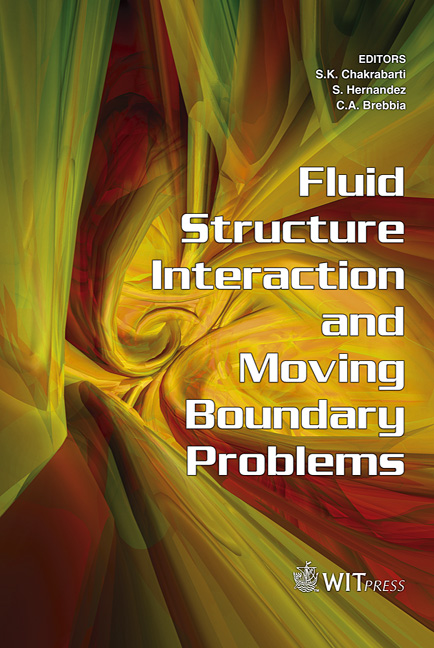An Implicit Finite Volume Method For Unsteady Free Surface Flows
Price
Free (open access)
Transaction
Volume
84
Pages
10
Published
2005
Size
365 kb
Paper DOI
10.2495/FSI050491
Copyright
WIT Press
Author(s)
T. Chang
Abstract
Surface wave is modelled by a time-varying moving boundary. The flow problem is solved by the finite volume formulation. This study investigates the efficacy of flux limiters and damping coefficients on three-dimensional Euler solutions for free surface problems. Spatial discretizations of convective fluxes based on a modified central scheme are described. The resulting system of ordinary equations is solved by an implicit time marching technique for the computation of waves travelling over a submerged bar. Both kinematic and dynamic boundary conditions are imposed at the free surface. The modified central method, stabilized by flux limiters and a second-order damping, yields accurate solutions for computing free surface elevations. Keywords: unsteady, modified central method, finite volume method, free surface, kinematic and dynamic boundary condition, implicit time stepping technique. 1 Introduction A finite volume method using CTVD (Centered Total Variation Diminishing) scheme has been developed to solve free surface problems of incompressible flows. The CTVD scheme originally was devised by Sanders and Li [1] for the computation of high-speed flows. The scheme provides high resolution shock, least amount of numerical diffusion among TVD methods besides simple implementation and freedom from tuning parameters. Before the application of CTVD to the incompressible flows, one must modify the governing equations by adding a time-derivative of the pressure term in the continuity equation so that the velocity and pressure are coupled. This modification of continuity equation results in a set of hyperbolic equations and the well developed time marching algorithms for compressible flows can be readily applied in solving incompressible flows
Keywords
unsteady, modified central method, finite volume method, free surface, kinematic and dynamic boundary condition, implicit time stepping technique.





